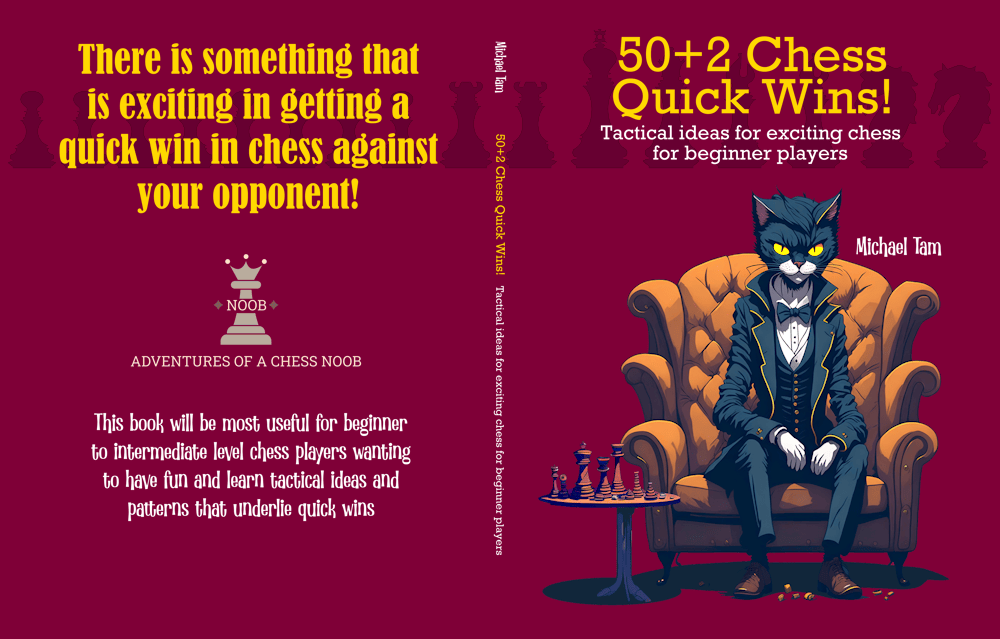
How to play the Englund Gambit (WIN against 1. d4 !)
#EnglundGambit
The Englund Gambit (1. d4 e5) is a rather spicy and provocative response by Black to White opening with their d-pawn. I have never enjoyed playing against d4 and the tendency for closed position games. I have tried using the Slav Defense, and while not doing too badly, have also not done well and not entirely enjoyed the games. To begin with, it should be noted that the Englund Gambit is objectively unsound from the perspective of computer evaluation and masters level play. However, in practice at the beginner-intermediate level, it seems to be “fine” with the Lichess community database of lower-rated games of blitz and rapid demonstrating that the win ratio between White and Black are perfectly even. The reason that might be the case is that the Englund Gambit immediately forces the (1. d4) player out of their comfort zone, and can often transform the game into more open lines.
Historical note: Fritz Englund from Sweden didn’t invent the Englund Gambit, but sponsored a themed tournament where all games had to start with the opening now with his name. The opening itself was developed by Karlis Betinš (who also developed the Latvian Gambit). However, Englund died shortly after this tournament, and subsequently, his name was forever associated with the Gambit.
The Englund Gambit can be seen as “forcing”. After (1… e5), Stockfish (15 NNUE, depth 40) gives an evaluation of [+1.64], but this is only if White accepts the gambit (2. dxe5). Pretty much all other moves return to near equality, or even favour Black.
The most common responses (more than 98% of the time) by White against the Englund Gambit are, along with their evaluation by Stockfish:
- Accepting the gambit (2. dxe5) – 62% [+1.64]
- Declining the gambit (2. d5) – 13% [-0.21]
- Expanding on the queen-side (2. c4) – 7% [0.00]
- Defending with the e-pawn (2. e3) – 6% [+0.18]
- Developing the king’s knight (2. Nf3) – 4% [-0.31]
- Defending with the c-pawn (2. c3) – 4% [0.00]
- Transposition into the Center Game (2. e4) – 2% [0.00]
The video contain and PGN contains suggestions on how to play should White opt to not accept the gambit. The general ideas here is to capture the d-pawn if the opponent allows it and then develop.
Englund Gambit Accepted
This is, by far, the most common line and also the only line where White has a categorical advantage. From this position, Black now has two good options.
The first is the Hartlaub-Charlick Gambit (2… d6), sometimes just called the Charlick Gambit (though this is also used as an alternative name for the Englund Gambit itself). Charlick was the second Australian chess master so I have a preference of just calling it the “Charlick Gambit”! Why play an immediate second gambit [+1.80]? The idea here is that if White accepts the second gambit pawn (3. exd6), then Black can capture back with the bishop (3… Bxd6) and Black now has an advantage in development. Furthermore, Black’s bishop pair and queen now have a powerful open diagonals looking at White’s king-side. Admittedly, this is a bit too dubious for my taste though Black has a slight win advantage (49%) over White (47%) according to Lichess.
The second is entering the Main Line of the Englund Gambit (2… Nc6), and in my view, is a bit more robust. The response by White is also semi-predictable. By attacking the pawn on e5 with our knight, the logical and best move by White is to defend that pawn, with developing either the knight (3. Nf3) or bishop (3. Bf4). These account for 80% of responses. Against both, we place more pressure on the pawn with developing our queen (3… Qe7). White will now usually develop the other other piece to add another defender to the pawn.
And now, we have a move that is can be tricky for White to navigate and easy to make a mistake. We play the aggressive dynamite move (4… Qb4+), a fork of the bishop on f4 and the pawn on b2, with check! White is still technically ahead, but one slip and they can end up losing material! Even if the opponent plays the best response (5. Bd2), there is an easy trap to fall into for the unprepared. For instance, after the queen captures the hanging b-pawn (5… Qxb2), White appears to have a clever and sensible move (6. Bc3) attacking the queen with x-ray defence of the rook. It almost even seems that the Black queen could get trapped. However, this is an illusion as Black has a savage follow up move (Bb4), pinning the White bishop to the king. Black is completely lost in this position with a Stockfish evaluation of [-7.56].
After (4… Qb4+) in the Main Line is often where White will make a mistake. My opponent blocked the check with their knight (5. Nc3), which hung their bishop. Their position completely collapses soon afterwards.
Game on chess.com: https://www.chess.com/game/live/55047914617



